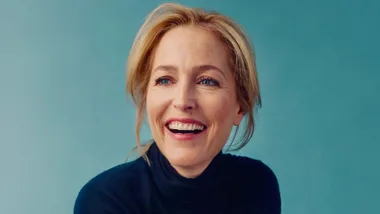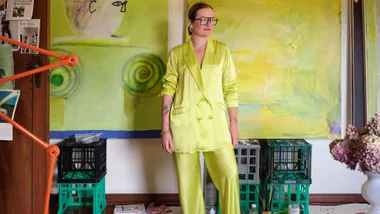Endometriosis has an ugly distant cousin and it impacts around twenty percent of women before the age of 40. So why is Adenomyosis flying under the radar?
Professor Anusch Yazdani’s description of a uterus affected with adenomyosis can’t be unheard – “A big, boggy, pear-shaped organ.” He is explaining the disease that causes severe pelvic pain, bloating, heavy menstrual bleeding and abnormal cycles in around one in five women in their thirties. “A healthy uterus is more plum-shaped than pear. It’s, essentially, a firm, square box,” the medical adviser to Endometriosis Australia and founding director of Eve Health continues.
Adenomyosis is frequently written off as endometriosis (and the two often coexist) because it’s difficult to investigate, requiring an ultrasound or MRI to indicate a problem and a biopsy after hysterectomy to be sure. Both diseases cause painful cycles and pain during sex but adenomyosis has a stronger association with heavy periods and breakthrough bleeding, as Professor Yazdani explains.
The disease strikes when the glands of the uterus lining grow inside the walls of the uterus, whereas endometriosis occurs when that lining travels outside the uterus to infiltrate fallopian tubes and pin ovaries where they shouldn’t be pinned. The result of adenomyosis is a uterus that can be described as globular. Cue the hot water bottle, and the complications when trying to conceive.

Dr Elizabeth Farrell, Medical Director of Jean Hailes for Women’s Health and a gynaecologist, says, “For a woman with severe period pain, adenomyosis would be one of the possible diagnoses. So it’s important to be assessed and investigated appropriately and this starts with a good women’s health GP or gynaecologist.”
The disease can cause ridiculous – writhing on the bathroom floor – pain every month. For other women, it only rears its ugly head when fertility becomes an issue. Is it on the rise? Not really. But as more women are trying to get pregnant during their 30s and 40s – and investigating the inner workings of their reproductive systems – the disease is becoming more present.
Dr Farrell says the numbers stack up. “20 percent of adenomyosis will occur in women under the age of 40 and 80 percent will occur mainly in women aged between 40 and 50. About a third of women with adenomyosis will have no symptoms. Up to 30 percent will have painful periods, which is due to adenomyosis,” she continues. According to Professor Yazdan, almost all women over the age of 40 have some degree of adenomyosis and it can be found in about one in five women in there 30s. “We used to think it was related to childbirth but now we think it’s actually just ageing.”
Is there hope? Options for controlling pain and bleeding are birth control to override hormone production or – gulp – hysterectomy. But what is a woman to do who is trying to conceive? Laparoscopic surgery will help indicate the issue but, unlike endometriosis, won’t improve fertility. Yazdani suggests IVF to perfect ovulation. It won’t fix the inside of the uterus but it will correct a number of other associated issues, equaling the playing field.
For support and expert advice head here.










